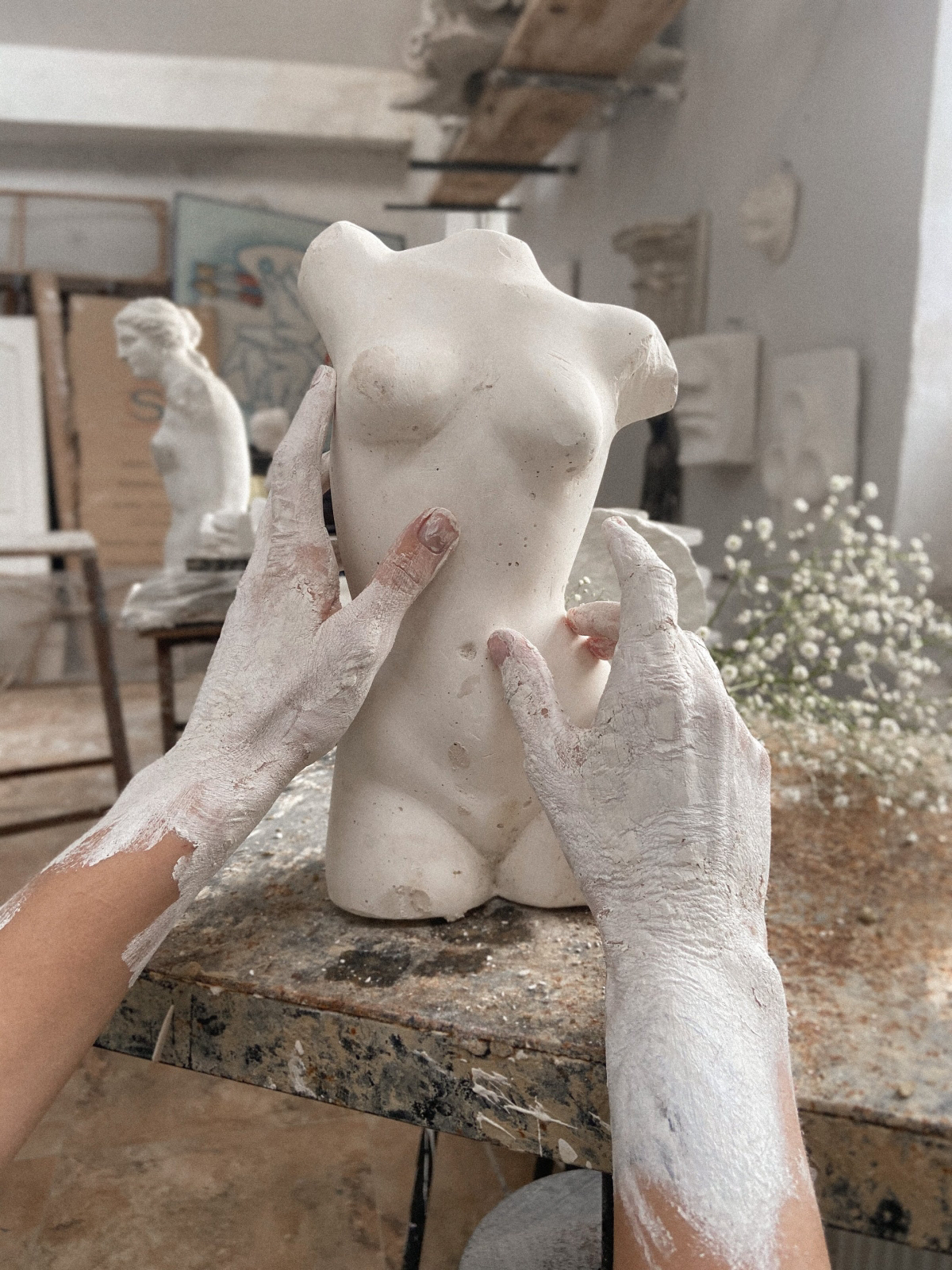Stuck in Go-Mode? Here’s How to Find Your ‘Off’ Switch and Stop Burning Out
For years, I’ve worked with some of the most impressive people you can imagine—top-tier execs, driven artists, and brilliant entrepreneurs. They’re masters of getting things done. But they often show up in my office feeling burnt out, hollow, and completely disconnected from themselves. And honestly, there’s a common thread: they’ve perfected the art of ‘doing’ but have totally forgotten how to just ‘be’.
In this article
Sound familiar? If you live in a state of constant forward motion, your nervous system is likely paying a heavy price. This isn’t some personal failing; it’s a cultural norm. We celebrate the hustle, the grind, the non-stop action. We call this the ‘active’ state. But what about the other side of the coin? Qualities like rest, intuition, and simply being open to what comes are often dismissed as lazy or unproductive. This is the ‘receptive’ state.
Think of them as two sides of a battery. You need both to have any real power. True well-being isn’t about picking one—it’s about learning to dance between them.

First, Are You Stuck in Overdrive?
Let’s do a quick gut-check. If you nod along to a few of these, you’re probably living a little too much on the ‘active’ side of the street:
- You feel a low-grade anxiety or ‘hum’ of tension most of the day.
- The idea of doing nothing for 10 minutes makes you antsy or even guilty.
- You have trouble falling asleep because your mind is racing, or you wake up in the middle of the night thinking about your to-do list.
- You have frequent tension headaches, a tight jaw (hello, teeth grinding!), or sore shoulders.
- You find yourself interrupting people or finishing their sentences.
- A compliment makes you feel awkward, and you immediately deflect it.
Recognizing the pattern is the first step. This guide isn’t about vague spiritual concepts; it’s a practical, body-based framework to help you find your ‘off’ switch and build a life that’s not just successful, but sustainable and genuinely fulfilling.

Meet Your Inner Gas Pedal and Brake
To really get this, we need to peek under the hood at your own biology. Your body has this incredible built-in system for managing your energy and stress levels, known as the autonomic nervous system. It has two main parts that work like a gas pedal and a brake. Understanding how they feel is key to taking back control.
The Gas Pedal: Your ‘Active’ State (Sympathetic Nervous System)
This is your ‘fight-or-flight’ mode, your body’s accelerator. It’s designed to get you ready for action. The biology behind it involves a flood of hormones like adrenaline and cortisol. Your heart rate speeds up, your muscles get tense, and your focus becomes laser-sharp on the goal in front of you.
When you need it: This state is absolutely essential for hitting a deadline, giving a big presentation, navigating a crisis, or even just merging into heavy traffic. It’s the energy of building, protecting, and achieving.

The red flags of overuse: The problem is, modern life keeps our foot slammed on this pedal. A pinging phone, a tense email, or back-to-back Zoom calls can all trigger this response. Living here leads to that chronic feeling of being ‘on,’ anxiety, and eventually, total burnout. Your body can’t tell the difference between a tiger and a terrifying inbox.
The Brake Pedal: Your ‘Receptive’ State (Parasympathetic Nervous System)
This is your ‘rest-and-digest’ system, the blessed brake pedal. When it’s in charge, your heart rate slows, your breathing deepens, and your body can finally get around to repair and restoration. This is the biological home of feeling safe, connected, and calm, supported by hormones like oxytocin (the ‘bonding’ hormone).
When you need it: This state isn’t just about napping. It’s where you digest your food, heal from injuries, and process emotions. It’s also where deep creativity and ‘aha!’ moments come from. You can’t force a brilliant idea; it shows up when you stop trying so hard.

The red flags of underuse: If you rarely access this state, you might feel disconnected from your intuition, have trouble connecting emotionally with others, and find it almost impossible to truly relax. Your creative well will feel dry.
A healthy system shifts between these two states all day long. But for most high-achievers, the brake pedal is rusty from disuse. Let’s fix that.
Practical Ways to Find Your Brake Pedal
In my practice, we don’t just talk about this stuff; we use specific, body-based techniques to retrain the nervous system. These are simple, but that doesn’t always mean easy. They take a little patience.
Technique 1: The Body Scan (Your Re-Entry Point)
So many of us live entirely in our heads. A body scan is the foundational practice for getting back into your body. The goal here is to feel, not to think.
Find a quiet spot for just five minutes. Sit in a chair, feet flat on the floor, and just bring your attention to the soles of your feet. Without moving, just notice the sensation of the floor. Is it cool? Is there pressure? Texture? Spend a good 30 seconds just feeling your feet. Then, slowly move your awareness up through your body—ankles, calves, knees, all the way to the crown of your head. Don’t judge or try to change anything. Just notice.

Heads up! Your mind will wander. A hundred times. Your job is simply to notice it wandered and gently bring it back 101 times. That’s the entire practice. If you don’t ‘feel’ anything, that’s okay too! Noticing the absence of sensation is also a form of noticing.
Micro-Dose Version: Don’t have five minutes? Try a 30-second hand scan at your desk. Just rest your hands on your lap and feel them. Notice the weight, the temperature, the texture of your clothes beneath them. It’s a tiny reset button.
Technique 2: The Art of Receptive Listening
Let’s be real: most of the time, we listen just to find a spot to jump in with our own story or solution. Receptive listening is a powerful practice for building your ‘receptive’ muscle in relationships.
Your only goal is to understand the other person’s world. No fixing, no advising, no one-upping. When they pause, instead of jumping in, try reflecting back what you heard: “Wow, it sounds like you felt really overwhelmed,” or “So, what I’m hearing is that you’re worried about…”

This simple shift can feel revolutionary. One of my clients, a lawyer who was always in ‘argument’ mode, started doing this with her team. She told me it was agony at first, but it completely transformed their dynamic. For the first time, her team felt truly heard, and collaboration skyrocketed. It’s the difference between a before-and-after scenario:
- Before: You get a critical email, your heart pounds, and you fire back a defensive reply in two minutes.
- After: You get the email, you notice the tightness in your chest, take three deep breaths, and craft a calm, thoughtful response an hour later. That’s receptive power.
Technique 3: Practice Actually Receiving Things
High-achievers are amazing givers but are often terrible receivers. Accepting help or even a simple compliment can feel incredibly vulnerable. It’s time to practice.
Here’s your assignment for one week: when someone gives you a compliment, your only allowed response is, “Thank you.” That’s it. No, “Oh, this old thing? I got it on sale.” Just a simple, clean “Thank you.” If someone offers to help you carry something, let them.

Pro tip: When you do this, you’ll probably feel a physical cringe or a wave of awkwardness. Good. That’s the feeling of your old wiring short-circuiting. Your job is to just notice that feeling, breathe into it, and let it be there. That’s the work. You’re teaching your nervous system that it’s safe to be supported.
Practical Solutions for Your Daily Life
You don’t need to go on a month-long silent retreat to do this. It starts with small, consistent choices.
Find a Genuinely ‘Useless’ Hobby
Find something to do that has absolutely no goal other than your own enjoyment. No KPIs, no endgame. Maybe it’s gardening, where you can only create the conditions but can’t force the growth. Or maybe it’s just putting on a great song and dancing around your living room. The point is to engage in an activity just for the sake of the process, which is a direct line to your ‘receptive’ nervous system.

Design Your Space for Calm
Your environment sends constant signals to your brain. You can tweak it to promote calm. For example, harsh overhead fluorescent lights are incredibly activating. Swapping them for lamps with warm-toned bulbs (look for 2700K on the box, they usually cost around $10-15 for a pack) can signal to your body that it’s time to wind down. Adding a soft, cozy blanket to your couch (you can find a great one for around $50) or even a small diffuser with some lavender essential oil (about $15 for a bottle) can provide grounding sensory inputs that whisper ‘safe’ to your nervous system.
When You Might Need a Pro
While these techniques are powerful, sometimes you need a guide. It’s probably time to consult a professional if:
- Trying to slow down consistently triggers panic or overwhelming emotions. (This can be a sign of unresolved trauma.)
- Your burnout is causing serious issues at work or in your relationships.
- You just feel stuck and can’t seem to make progress on your own.
Working with a somatic therapist or a coach who gets the nervous system can be a game-changer. By the way, sessions can range from about $100 to over $250 depending on location and the practitioner’s experience. It’s an investment in your long-term well-being. There’s zero shame in asking for help; it’s an act of profound strength.

A final, critical thought: This journey is about reclaiming your full humanity. It’s about building the capacity to be both a mighty river that carves canyons and a still lake that reflects the sky. By honoring both the active and receptive parts of yourself, you create the foundation for a life that is not just accomplished, but also deeply, truly alive.
Galerie d’inspiration


But what if trying to relax just becomes another stressful task on my to-do list?
This is the classic trap of the ‘active’ mindset. The key is to shift from goal-oriented activity to process-oriented presence. Instead of a complex hobby, try something with no end product. Explore ‘neurographic art’—a technique involving drawing fluid, intersecting lines and rounding the corners, designed specifically to soothe the mind. Or simply grab a Moleskine notebook and a smooth gel pen, and doodle with your non-dominant hand. The awkwardness forces you to abandon perfection and just experience the sensation of creation.

A 2018 study in Frontiers in Behavioral Neuroscience confirmed that linalool, a compound in lavender, has an anxiolytic (anxiety-reducing) effect by directly acting on brain pathways without the sedative side effects of some medications.
A simple way to leverage this is with an aromatherapy diffuser. Brands like Vitruvi or Saje offer minimalist designs that fit any space. Just a few drops of pure lavender essential oil can help signal to your body that it’s time to shift from ‘doing’ to ‘being’.

Beyond meditation, there’s the Dutch concept of
Weighted Blanket: Provides deep pressure stimulation, which can increase serotonin and melatonin while reducing cortisol. It feels like a gentle, calming hug, physically coaxing your nervous system into a relaxed state. Perfect for anxious nights.
Acupressure Mat: Brands like ShaktiMat use sharp plastic points to stimulate pressure points across the body, releasing tension and promoting blood flow. The initial discomfort gives way to a warm, tingling sensation of deep release for the back and shoulders.










